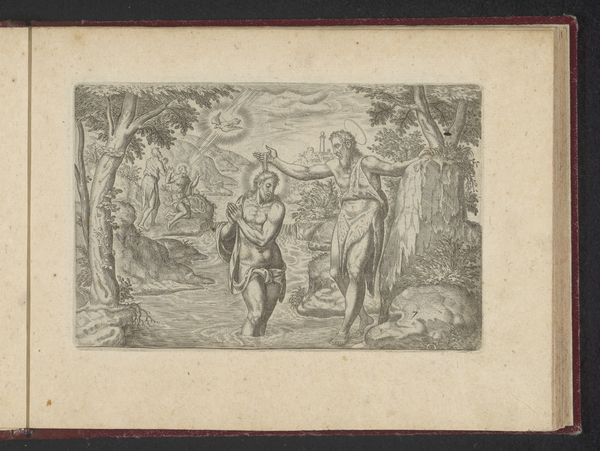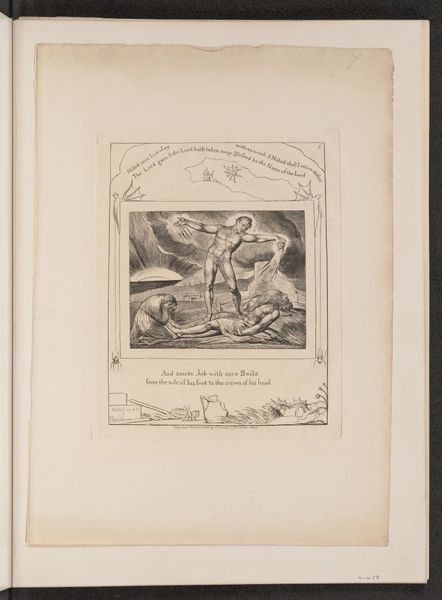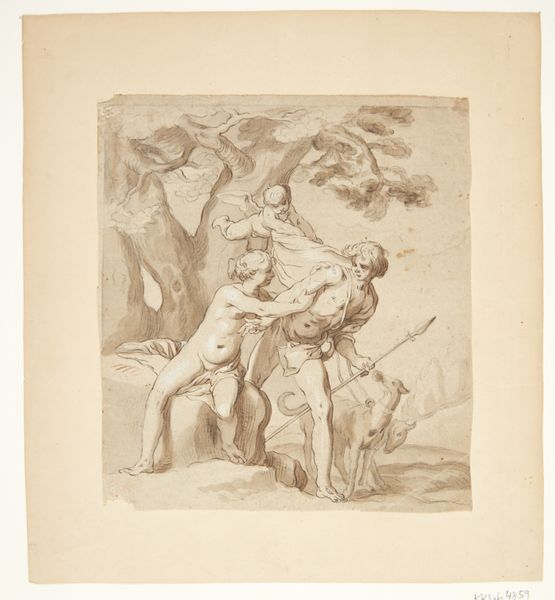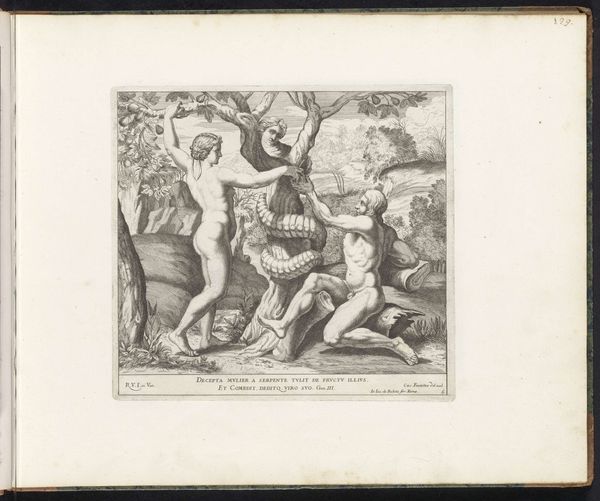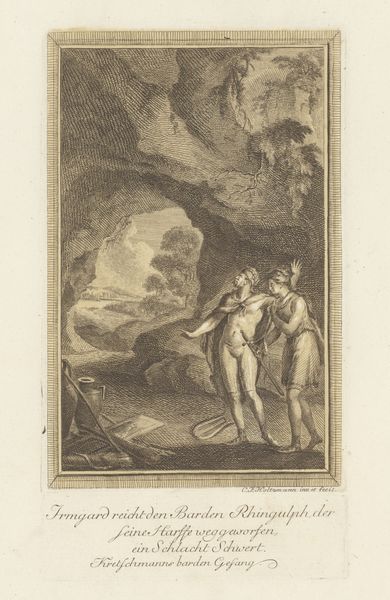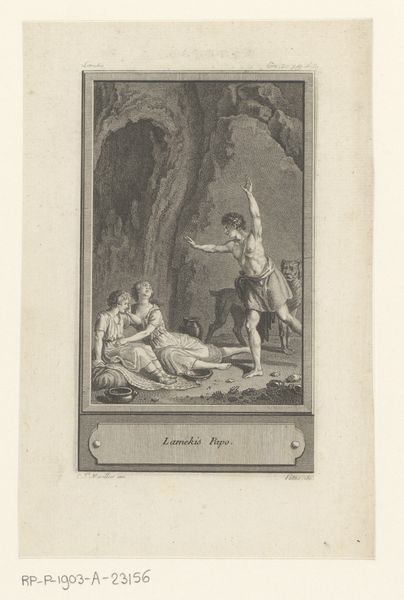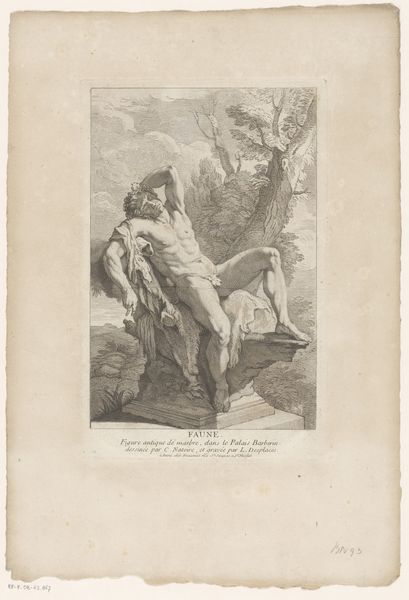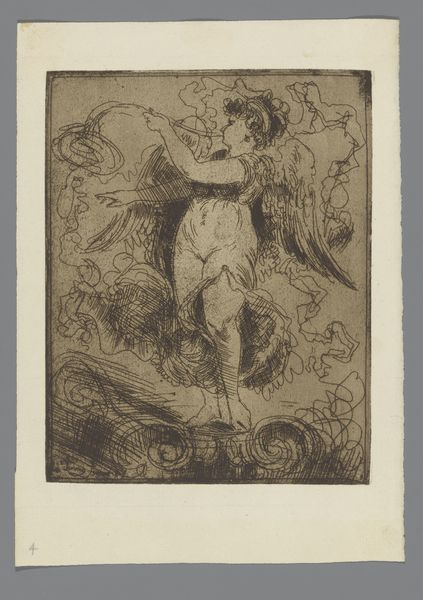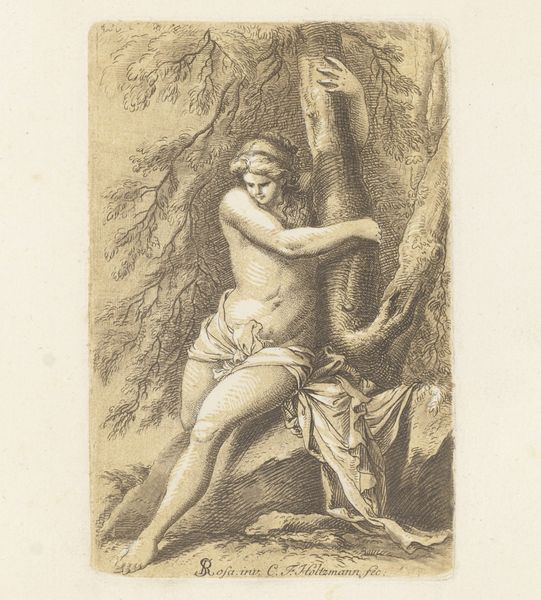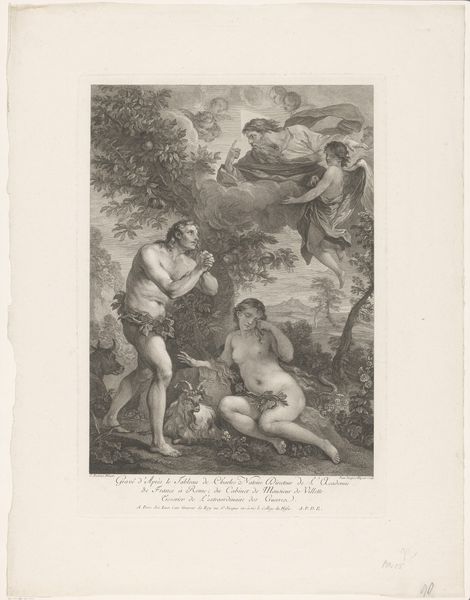
engraving
#
narrative-art
#
baroque
#
old engraving style
#
figuration
#
line
#
history-painting
#
engraving
Dimensions: height 323 mm, width 227 mm
Copyright: Rijks Museum: Open Domain
Curator: I see such tormented figures. And an engraving— the detail… simply shatters the soul! Editor: So, this is Jakob Wilhelm Heckenauer’s “Kaïn doodt Abel”, or Cain Killing Abel, made sometime between 1710 and 1714. It’s an engraving, so all lines and monochrome, yet so dynamic and… brutal. I mean, what stands out to you most about this depiction? Curator: The audacity! Imagine, right there on a copper plate, they’ve pinned the moment sin bursts into the world! That’s not just some ancient squabble, darling. Think of the textures… look how the artist renders muscle and fury! Tell me, does that feel detached, or strangely… immediate? Editor: Immediate, definitely. The way Cain looms over Abel… it’s suffocating. There’s a real tension in the composition. But I’m wondering about the choice of medium, an engraving. Why that instead of, say, an oil painting? Curator: Ah, that is the magic, isn't it? Oil whispers, but engraving, engraving screams. See, those lines carve themselves into your mind – they replicate to be endlessly copied and dispersed widely. The act solidifies the historical importance in the social climate for future generations. Did you ever imagine original sin, becoming forever, something anyone could easily spread, observe, ponder on repeat? Editor: I hadn't thought about it that way, how the medium contributes to the message. It makes the story more accessible but somehow even more…permanent. Curator: Exactly. Think about it—art like this becomes the cultural bedrock of an entire worldview! We’ve only just begun to unpack the nuances... Editor: It's astounding. There is always something deeper!
Comments
No comments
Be the first to comment and join the conversation on the ultimate creative platform.


